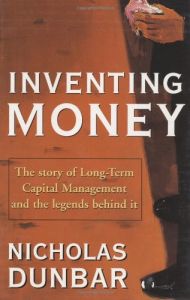
Recommendation
Author Nicholas Dunbar captures both the personalities and complex financial theories that built Long-Term Capital Management, the hedge fund that threatened to bring down world markets in its spectacular 1998 collapse. His explanation of arcane markets will be understandable to the lay reader, although the details may be hard to follow if you don’t have a solid grounding in statistics, math or economics. Our one wish would be for more attention to the aftermath and the unprecedented bail-out orchestrated by U.S. financial regulators. But even in light of this shortcoming,getAbstract recommends this fascinating real-life market saga to general and business readers, and to anyone who ever comes anywhere near the financial markets.
Summary
About the Author
Nicholas Dunbar studied physics in the United Kingdom at Manchester and Cambridge and in the U.S. at Harvard University, where he received a Master’s in earth and planetary sciences. After he left academia in 1990, he worked in feature films and television, and launched Flicker Films, a television production company. In 1996, he turned to finance and science writing, focusing on the derivatives industry. In 1998, he joined Risk magazine as its technical editor. He lives in London.








Comment on this summary